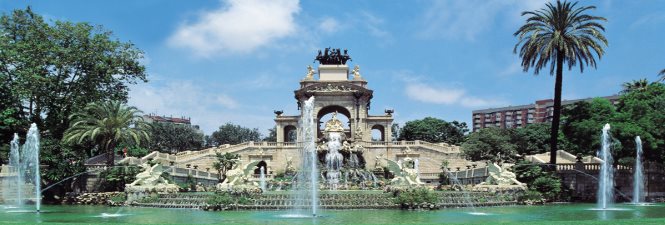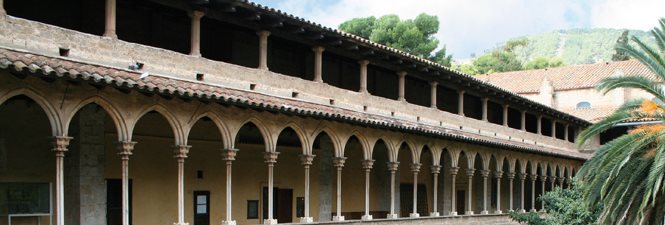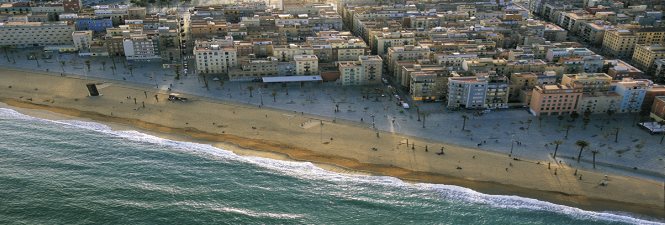Literary Barcelona at its best 24/03/2017
Barcelona is a cityin and a city of books. Reading and writing are very present each year, but it is on 23 April when it celebrates its major Literary Festival: Sant Jordi Barcelona has always inspired and welcomed writers from around the world who have immortalised it in their pages. It is not only the publishing capital in two languages (Spanish and Catalan), but also the biggest publishing centre in Spanish. It has one of the richest, most diverse literary heritages and in recognition of this tradition, it has been part of UNESCO's Creative Cities Network as a City of Literature since 2015, which has helped to strengthen its cultural reach even more.
Barcelona contains a host of literary Settings and many novels have vicariously helped their readers to travel. Now you can tour the city by following the Settings of certain books written by internationally renowned authors. We propose you 5 literary routes.
ROUTE 1: George Orwell
One of the most interesting routes follows in the footsteps of George Orwell on La Rambla and surrounding streets. Famous as the author of 1984 and Animal Farm, this English journalist and writer also wrote Homage to Catalonia, in which he described his experiences during the Spanish Civil War. The route begins at Plaça Catalunya, where the Communist Party had its headquarters in Hotel Colón (which no longer exists) and the CNT anarchist confederation in the Telefónica building. From there, walk down La Rambla to number 138, the Hotel Continental, where Orwell stayed. It had been collectivised as the seat of local government. "It was the first time that I had ever been in a town where the working class was in the saddle," he wrote. Only 10 numbers further down, the Hotel Rivoli can be found at 128, then the headquarters of the Workers' Party of Marxist Unification (POUM). Orwell and other militiamen were posted in front of Teatre Poliorama to defend it. Immediately next door was (and still is) Café Moka. Continue towards the Raval and you will Plaça George Orwell.
ROUTE 2: Quim Monzó, Juli Vallmitjana, Francisco Casavella, Eduardo Mendoza and Onofre Bouvila

A second recommended route runs through two neighbourhoods in the city's southwest. Quim Monzó set a long story in Poble Sec's Plaça de Santa Madrona. And on the hill of Montjuïc, Juli Vallmitjana portrayed the world of gypsies, Francisco Casavella placed his great character Watusi and Eduardo Mendoza set his novel The City of Marvels, in which he cast a detailed eye on his birthplace. Follow its main character, Onofre Bouvila, as you discover Parc de la Ciutadella, which was once home to a military citadel and today houses the Catalan parliament building and the zoo. Then head to Plaça Espanya and walk up Avinguda Reina Maria Cristina to the Palau Nacional, which houses the Museu Nacional d'Art de Catalunya. from where you can enjoy some incredible panoramic views over the city. This area was built for the 1929 International Exposition and Mendoza portrays the changes in the city between the Exhibitions of 1888 and 1929 in his book. The best place to end your tour is at the fortress on Montjuïc.
ROUTE 3: Joan Maragall and Mercè Rodoreda
A third route focuses on two major figures of Catalan literature and covers two neighbourhoods. The house museum of the poet Joan Maragall can be found in Sant Gervasi and is open to visitors, while Gràcia is intrinsically linked to Mercè Rodoreda, who chose Plaça Diamant as the setting for her most famous novel, which was named after the square. Another of her books was named after Carrer Camèlies in Horta-Guinardó.
ROUTE 4: J. V. Foix, Gabriel García Márquez and Mario Vargas Llosa

And there is yet another interesting route in the district of Sarrià-Sant Gervasi, containing the world of local poet J. V. Foix, who once dubbed the city 'Barcelonota'. It was also here that two of the greatest writers in Spanish once lived: Gabriel Garcia Márquez and Mario Vargas Llosa. In Barcelona they were able to write freely and it was here that they found success under the excellent advice of their literary agent, Carmen Balcells. This route inevitably passes by the Convent of Pedralbes,the Foix pastry shop and the cemetery of Sarrià.
IN QUIXOTE'S FOOT STEPS - Gothic Quarter

If you want to follow in the footsteps of Don Quixote, begin at the city's cathedral (pictured), which houses the sculpture of the Christ of Lepanto. According to legend, it was present at the battle in 1571 between the Holy League and the Ottoman Empire, in which Cervantes fought. A little further on is the alley of Perot lo Lladre, a famous bandit that Cervantes renamed Roque Guinart. The next stop after crossing the Ramblas is the Biblioteca de Catalunya, the best library in the world for books about Quixote. Continue on to the Museu Marítim, in the former Royal Shipyards, to view the galley commanded by Juan of Austria at the battle of Lepanto. Nearby, after passing the monument to Columbus at the end of the Rambla, look for the building at Passeig de Colom, 2. According to legend, Cervantes lived there on the third floor. Finally, stop in front of the Facultat de Nàutica building, where the Portal del Mar formerly stood, and look out at the same sea that Quixote saw for the first time, and where he came back to his senses, after being defeated by the Knight of the White Moon on the Barceloneta's beach .



















